Museo Nacional de Arte Moderno y Contemporáneo en Seúl [MMCA] (국립현대미술관 서울관)
6.8Km 2023-09-14
Samcheong-ro 30, Jongno-gu, Seúl
En 2013, el Museo Nacional de Arte Moderno y Contemporáneo [MMCA] abrió un nuevo edificio en Seúl, ubicado en el barrio de Sogyeok-dong, distrito de Jongno-gu. Este museo es especial porque introdujo el concepto de arquitectura tradicional coreana 'madang', que se trata de un espacioso patio que la gente puede visitar. Tiene distintas instalaciones, como un teatro, una galería, una sala multiuso, etc.
Seochon Guest House [Korea Quality] / 서촌 게스트하우스 [한국관광 품질인증]
6.8Km 2023-04-07
28-3, Jahamun-ro 7-gil, Jongno-gu, Seoul
+82-010-3345-9680
Seochon Guest House is located in Seochon, which is becoming a hot place for tourists in Seoul, and precisely on the road to Suseong Valley, whichis filled with interesting stores and is also well-known for Park Nosoo Art Gallery and the House of Yun Dong-ju (poet). Seochon Guest House is nicknamed ‘Jaeminangol (interesting village)’ after Baekseok’s poem ‘Yeowunangol’, with the aim of providing a visit full of interesting experiences. Passing through a garden and entering the main building, the unique charm of this hanok building, the staircase to get to the first floor from daecheong (main floored room), catches the eye of the visitors. In addition, the building is decorated with various stylish objects including paintings and Korean musical instruments. The terrace situated on the first floor offers an open view of the surrounding area including roof tiles of hanok structures and alleyways in Seochon. It is said that Korean novelist Yoon Hu-myeong also appreciated the structure of the guesthouse, saying, “It is an interesting place.” Built in the 1930s, the house, which has many storage places, was taken by the owner couple in spring 2014 as they were attracted by the house during their trip to Seochon. After the repair work, the ground floor of the house was opened for guests from January 2016, hoping that guests could share their daily experiences and stories with each other. The guestrooms and the main floored room on the ground floor are open to guests, with the exception of the first floor, which is used by the owner couple. The living room is equipped with books, a curved TV, and a table. The tasty meal, which is served in the kitchen, consists of rice and soup with six side dishes and is much loved by guests. The guesthouse offers a total of four rooms – Jae Room, which is the most Korean-style room; Mi Room, which has a combined style of a Korean-style room and Western-style room; Nan Room, which is an ideal room for meditation with a beautiful paper window; and Ahn Room, which is equipped with a veranda and a pretty flowerbed. Every room has its separate charm with various comfortable bedding to provide a quiet and cozy bedroom for guests in the middle of the city. Furthermore, the guesthouse holds a pansori (epic chant) performance twice a year. The owner started learning how to sing pansori to promote the Korean culture and tradition to foreigners. When a pansori performance is held, the owner offers traditional Korean snacks and drinks including sikhye (sweet rice punch), sujeonggwa (cinnamon punch), traditional sweets and cookies, and tteok (rice cakes) to visitors, tourists, and performers. Moreover, it provides cultural programs such as a Gukak (Korean classical music) experience, Korean traditional clothes experience, and making Korean food experience, as well as other activities with guests, such as trip to the city wall between Inwangsan Mountain and Bugaksan Mountain, and the Royal Palace Tour to Gyeongbokgung Palace, etc., as well as a trip to a traditional market.
Yennal Yeongil Naengmyeon (옛날연길냉면)
6.8Km 2021-03-18
31, Jong-ro, 46-gil, Jongno-gu, Seoul
+82-2-747-8898
This is a Korean cuisine located in Dongdaemun Gate, Seoul. A restaurant run by a Chinese. The best menu at this restaurant is cold buckwheat noodles.
Boan1942 (보안1942)
6.8Km 2023-12-21
Hyoja-ro 33, Jongno-gu, Seúl
Antes de convertirse en un espacio de arte en 2007, Tongui-dong Boan sirvió como lugar de descanso para los viajeros desde 1942 hasta 2005. Después de una breve pausa, el lugar se renovó como espacio cultural en 2017 para continuar con su legado histórico y brindar creatividad e inspiración bajo el concepto de "Boanstay".
Boan1942 se divide en un espacio cultural (que consta de una cafetería, un taller de proyectos, una librería y un área de exposiciones), y Boanstay (en los pisos 3 y 4, ofreciendo alojamiento temporal a los nómadas culturales). Ubicado en Seochon, el centro de la cultura, la historia y el tráfico de Seúl, Boanstay ofrece una espléndida vista de los patrimonios históricos y culturales de Seúl, como el palacio Gyeongbokgung, Cheong Wa Dae y la Aldea Tradicional Seochon.
* Cortesía de Boanstay.
Yuu (유우)
6.8Km 2019-10-02
23, Yeonhui-ro 26-gil, Seodaemun-gu, Seoul
+82-2-3144-2578
Yuu is a fusion dining restaurant that offers gonowada (salted sea cucumber innards), one the
three major gourmet dishes. The restaurant offers a wide variety of a la carte
items, and in partnership with Jo Seon-Ok culinary research center in Japan, strives
to produce savory and top-notch meals for its customers.
Among the diverse gourmet menu the restaurant offers, the most popular dishes include tuna tataki & gonowada and santen sasimi (assorted sliced raw fish). Also prepared and offered are simple
a la carte dishes including charcoal barbeque, grilled dishes on a sizzling iron plate, nabe, ponzu, a la carte, special delicacies. The restaurant is 231.4 ㎡ (70 pyeong) in floor size and has tatami rooms
for the full enjoyment of savory liquor and gourmet meals. Yuu also has a large room for group meetings and business dinners.
Hojil (호질)
6.8Km 2021-03-20
15, Jahamun-ro, 9-gil, Jongno-gu, Seoul
+82-2-764-6822
A good restaurant to visit before and after the tour, being located near Gyeongbokgung Palace, one of the tourist attractions. This restaurant's signature menu is spicy sea snail salad. This Korean dishes restaurant is located in Jongno-gu, Seoul.
Podam (포담)
6.8Km 2021-03-22
11, Jahamun-ro, 9-gil, Jongno-gu, Seoul
+82-2-733-0831
A store featured in Korean gourmet programs. This Chinese (cuisine) restaurant is located in Jongno-gu, Seoul. The most famous menu is dim sum.
Italyjae (이태리재)
6.8Km 2017-02-01
74-9, Yulgok-ro 1-gil, Jongno-gu, Seoul
Itaejae, located in a refined side street in Sogyeok-dong, offers authentic traditional Venetian-style Italian cuisine at a reasonable price.
Galería Park Ryu Sook (박여숙화랑)
6.8Km 2021-03-18
Apgujeong-ro 461, Gangnam-gu, Seúl.
Justo después de su apertura en 1983, la Galería Park Ryu Sook se trasladó a Cheongdam-dong, en el sur de Seúl, un territorio prácticamente deshabitado en el año 1988. Desde ese momento, la galería ha jugado un rol importante en transformar la región en uno de los lugares de arte más representativos de Corea. La Galería Park Ryu Sook expone principalmente arte moderno y contribuye al desarrollo de la escena del arte moderno de Corea reclutando y dando soporte a los nuevos talentos de este campo, y introduciendo algunas grandes obras de arte de artistas extranjeros. Además, la galería trabaja para promover el arte coreano alrededor del mundo haciendo vínculos en las grandes exposiciones de arte como la de Chicago, Colonia y Basel.
A partir de todo esto y otras actividades similares, la Galería Park Ryu Sook trabaja para proveer al público una oportunidad inigualable para disfrutar de la calidad de las obras, maximizar la propia creatividad, y tomarse un momento en su frenética vida para dejarse llevar y poder hacer una pequeña autorreflexión.
Puerta Heunginjimun (Dongdaemun) (흥인지문)
6.9Km 2023-02-21
Jong-ro 288, Jongno-gu, Seúl
La puerta Dongdaemun fue originalmente llamada Heunginjimun, y es la antigua entrada oriental a la ciudad de Hanyang (Seúl).
Dongdaemun fue edificada por el rey Taejo in 1396, renovada por el rey Danjong en 1453, y su actual estructura fue hecha por el rey Gojong en 1869. Aparentemente, la gente comenzó a llamarla Heunginjimun desde los tiempos del rey Sejo (1455-1468). Pese a que la puerta es conocida en general con el nombre de Dongdaemun, mucha gente aún la sigue denominando Heunginjimun, con la intención de preservar su antiguo legado.
La característica más interesante de Dongdaemun es que tiene un ongseong, un muro externo especialmente construido con forma de media luna. Originalmente, el palacio real en Hanyang se había erigido sobre un terreno bajo, por lo que era difícil defenderlo de las invasiones. Por ello, hicieron levantar un muro para compensar dichas desventajas. Se puede observar que la puerta fue hecha teniendo en consideración la geografía del entorno. Las rocas de ongseong tienen diferentes colores, que fueron cambiando a través de las diversas obras de renovaciones que sufrió la puerta.
En el centro del muro reforzado de piedra se encuentra la puerta más pequeña Hongyemun. Sobre esta, se halla el piso intermedio compuesto de cinco secciones y el techo tiene el estilo llamado "de Ujingak". En los aleros del techo están las estatuas japsang, que se parecen a animales y se dice que espantan a los espíritus malignos. La estructura de Dongdaemun tiene una intrincada técnica de los detalles y hay una gran exaltación de la decoración, con lo que muestra muy bien el estilo de la arquitectura que había en los últimos tiempos del período Joseon.
![Museo Nacional de Arte Moderno y Contemporáneo en Seúl [MMCA] (국립현대미술관 서울관)](http://tong.visitkorea.or.kr/cms/resource/95/1934595_image2_1.jpg)
![Seochon Guest House [Korea Quality] / 서촌 게스트하우스 [한국관광 품질인증]](http://tong.visitkorea.or.kr/cms/resource/41/2447241_image2_1.jpg)
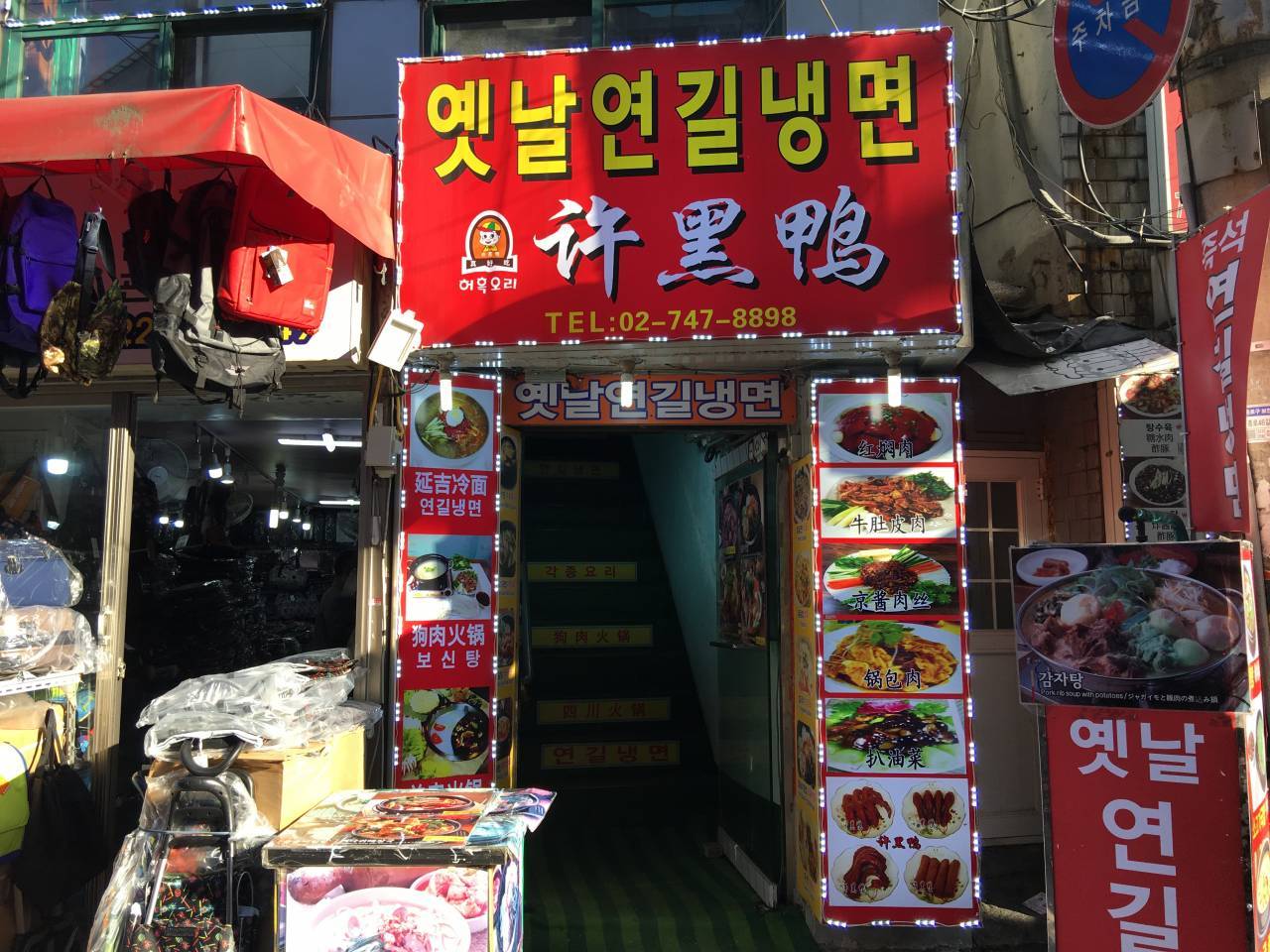

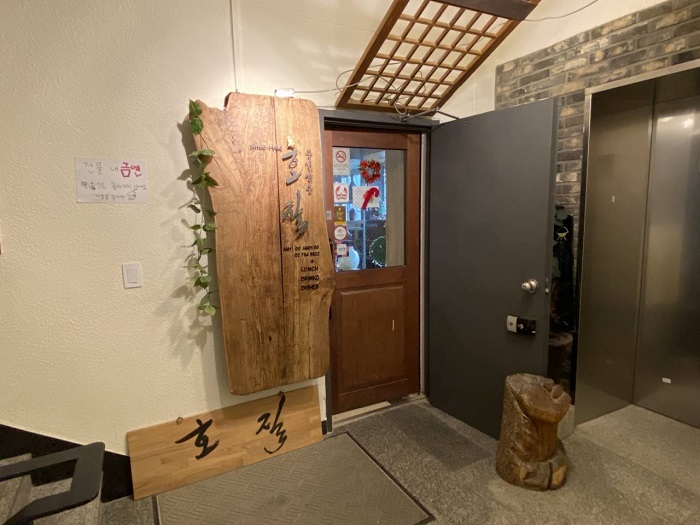
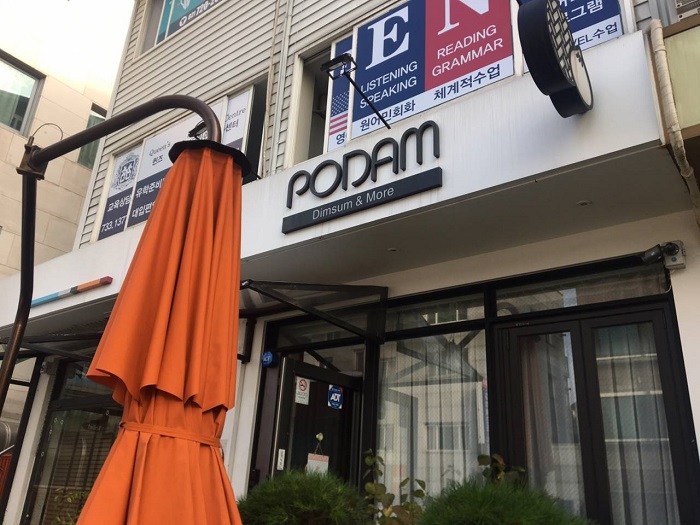
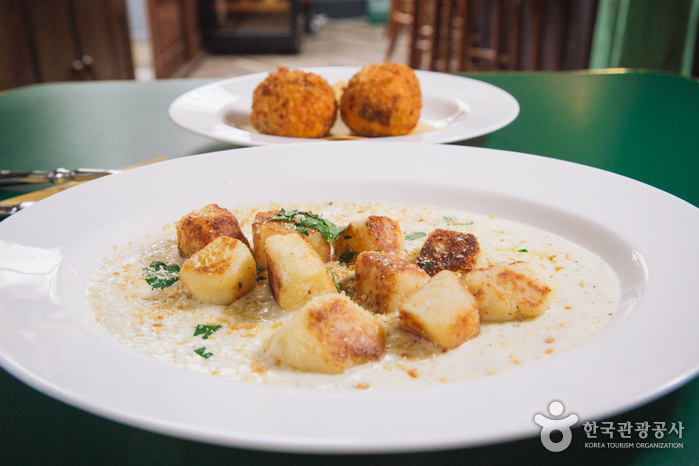
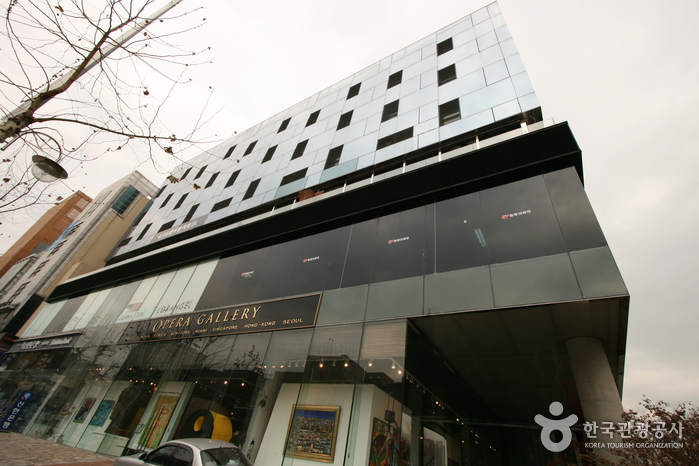
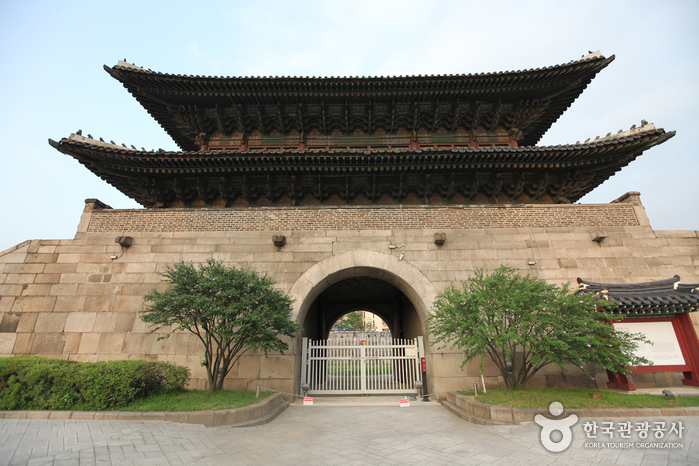
 Español
Español
 한국어
한국어 English
English 日本語
日本語 中文(简体)
中文(简体) Deutsch
Deutsch Français
Français Русский
Русский